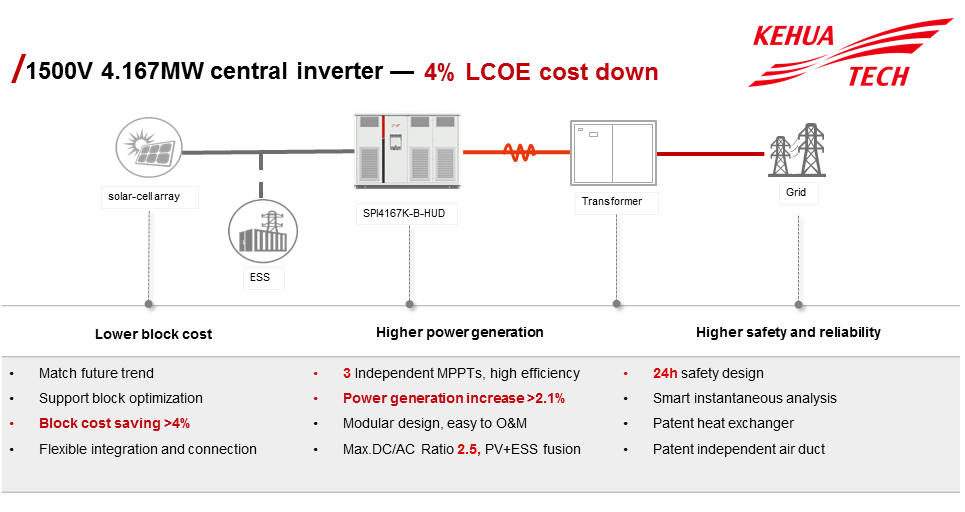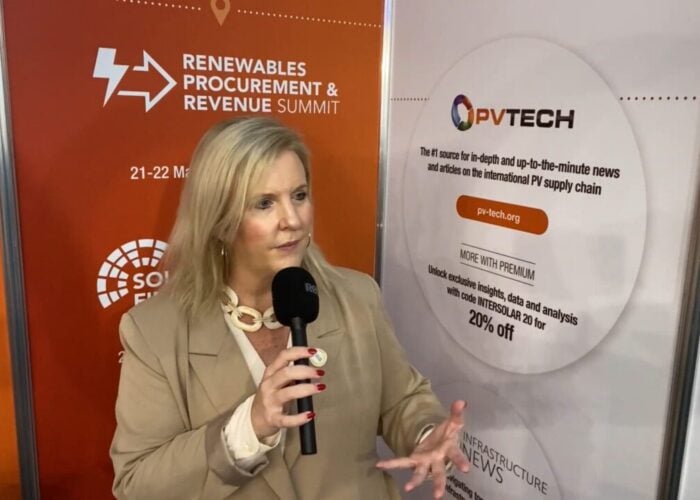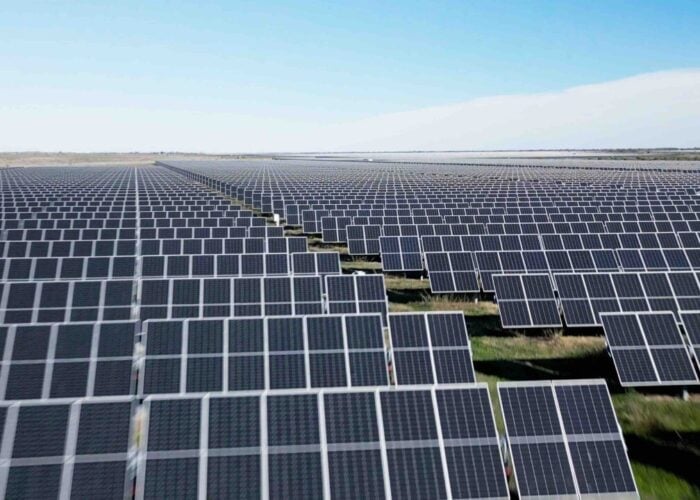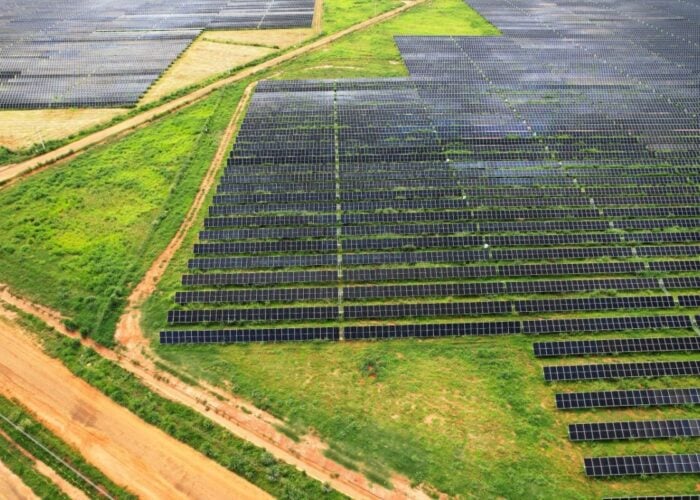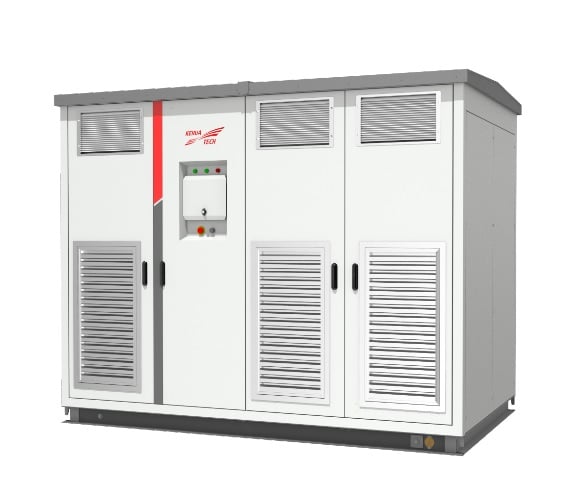
Kehua Tech’s latest 4.167MW central inverter solution, the SPI4167K-B-HUD comes with a unique power range and multiple technical innovations to be fully compatible with the new era of large-area high-performance PV modules that can exceed 660W.
Problem
Try Premium for just $1
- Full premium access for the first month at only $1
- Converts to an annual rate after 30 days unless cancelled
- Cancel anytime during the trial period
Premium Benefits
- Expert industry analysis and interviews
- Digital access to PV Tech Power journal
- Exclusive event discounts
Or get the full Premium subscription right away
Or continue reading this article for free
The new era of large-area high-performance PV modules are expected to deliver in the range of 32% more power than the module classes in 500W range. Larger power supply brings further potential for higher sub-array power density and lower Levelised Cost of Electricity (LCOE), with the application of larger sub-array capacity seen as an inevitable trend. However, larger sub-arrays need larger capacity inverters, transformers, distribution units and other system devices.
The larger sub-array design matching with inverters with higher power density will need to effectively reduce the consumption and installation cost of inverters, cables, distribution cabinets and other system devices to achieve meaningful LCOE reductions. Increasingly, inverters need to be ‘grid friendly’ with more renewables connected to grids, and provide greater response and reliability, while supporting Energy Storage Systems (ESS).
Solution
Kehua’s latest 4.167MW (SPI4167K-B-HUD) 1500V central inverter is intended to improve the system efficiency by more than 1% and reduce BOS costs by over 5%, according to the company.
The inverter is based on full modularisation from devices to power units and adopts multi-channel MPPT design, allowing for flexible redundancy for different project environments, power station conditions and system capability. DC parallel connection ensures the continuous operation of devices and is claimed to increase the overall utilisation rate by 1%.
The central inverter solution incorporates a grid-friendly PV generation system with energy storage devices and reduces the impact of solar curtailment and self-consumption, high DC/AC over ratio and power fluctuations. Through a patented power grid transient analysis, the system handles the data support for refined scheduling of power stations in the future. Its unique intelligent wave-recording function enables fast fault location and saves 80% of fault recovery time, according to the company.
Applications
Utility-scale PV power plants designed for the new era of large-area high-performance PV modules that can exceed 660W.
Platform
The SPI4167-B-HUD patented independent dual refrigeration circuits ensure higher security and reliability as they isolate power devices from magnetic devices, effectively reducing any rise in temperature of key devices and improving system reliability and operation life.
The maximum 16.668MW large square matrix is claimed to reduce BOS costs by about 0.76c/watt, decrease DC line loss of the whole system by 50%, and increase system efficiency by more than 1%. Taking a 100MW power station as an example, Kehua Tech says it can generate an extra 1.5 million kWh annually, based on an electricity fee of 0.046 US$/kWh, the cumulative economic benefits can be increased by US$1.9 million over 25 years.
Up to a 2.5 capacity ratio is supported. With the increase of capacity ratio, the power variation of the PV power station decreases synchronously, allowing it to provide smoother and more stable power delivery and greater grid-friendliness.
Availability
Fourth quarter of 2020, onwards.
